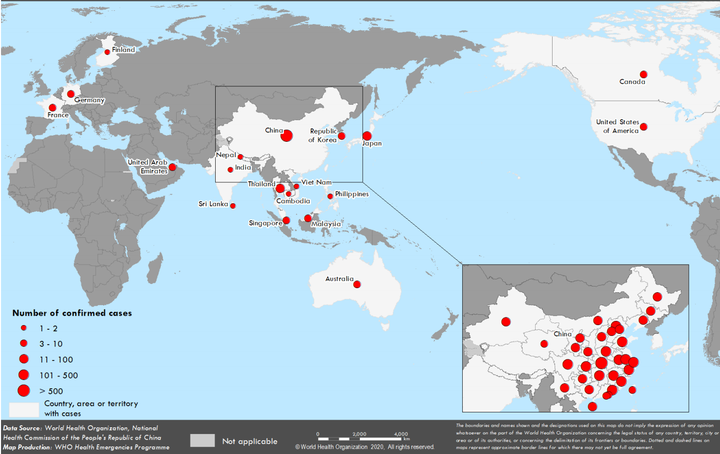The World Health Organization declared the coronavirus outbreak an international public health emergency on Thursday as the number of confirmed cases topped 7,800 globally.
The majority of cases, which have resulted in at least 170 deaths, have been in China where health officials say the virus originated. Additional cases have been reported in 18 other countries, including the U.S., France, Canada, Japan, South Korea, Thailand, India and Australia.
“We must all act together now to limit further spread,” said WHO Director-General Tedros Adhanom Ghebreyesus in announcing the health declaration. “Our greatest concern is for the virus to spread to other countries with weaker assistance and which are ill-prepared to deal with it.”

Such declarations by the WHO’s Emergency Committee are made when there is “an extraordinary event” that creates a public health risk that could “potentially require a coordinated international response,” according to the WHO website.
Tedros said Thursday that he doesn’t recommend limiting trade and movement as part of the international response to the coronavirus. He also didn’t cast any blame on China’s handling of the situation but praised that country for doing everything it can.
The Emergency Committee split twice last week about whether to declare an emergency related to the coronavirus. Each time it said that it didn’t have enough information.
The WHO announcement came the same day that the Centers for Disease Control and Prevention confirmed the first person-to-person transmitted case in the United States, involving a patient in Chicago.
Five other cases confirmed in the U.S. as of Thursday involve people who had traveled to China themselves.

In China, the number of cases in the current coronavirus outbreak has surpassed the number of severe acute respiratory syndrome (SARS) cases during the 2003 epidemic, which sickened 8,098 people globally and killed 774. That viral respiratory illness, also caused by a coronavirus, was first reported in Asia and spread to more than two dozen countries.
The flu remains a far bigger threat to people in the U.S. today than the coronavirus. More than 15 million people in the U.S. have become ill from the flu so far this season, which began in October. Of those people, 8,200 have died and 140,000 have been hospitalized, according to the CDC.

